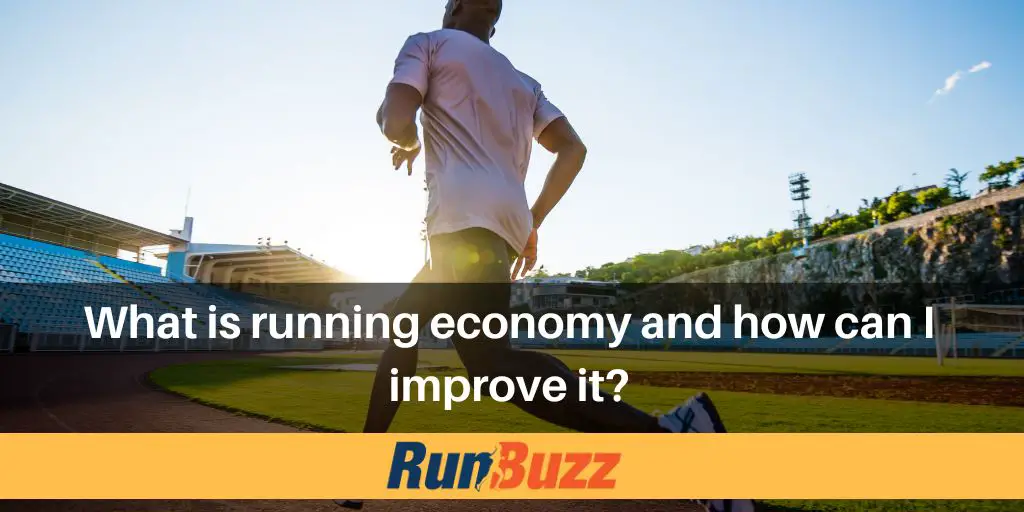Running economy, in the context of running and training, refers to how efficiently your body uses oxygen while running.
In simpler terms, it’s how much energy you need to expend to run at a certain speed. Runners with better running economy can run longer distances or maintain faster speeds while using less oxygen and feeling less fatigued than runners with less efficiency.
Don’t confuse running economy or running efficiency with form, technique, or gait.
Running economy is about your body’s ability to perform, from a physiological standpoint, at a particular level of intensity or pace. Technique, form, and gait can help you move more efficently (and thus less energy utilization), but better running economy is what is gained from that. More efficient use of oxygen.
A common analogy that aptly describes running economy involves thinking about fuel efficiency in a car. At some speeds, the car is more efficient than others. For example, driving my 6 cylinder Mazda by myself down the road at 55mph is more efficient than driving it 100mph down the road (if it even would go that fast).
The same is true with you.
You probably notice that certain paces seem to come natural to you. Some paces may feel “efficient”, while others not so much.
Most scientifically-backed training programs will increase you running economy as a result of the training itself. The better you train, the more your running economy will improve over time.
How much you improve is really a function of time, training, genetics, and so on. Because proper training creates a stimulus (or stress) on your body, compensation and adaptation occurs so your body can adjust to that stress and improve.
Running economy and the relationship with VO2 max and other factors
You will often hear runners associate VO2 max (maximum oxygen uptake) as the prime measurement for their running economy. However, running economy is not just about your VO2 max. It’s more about how efficiently you utilize that oxygen during running.
For example, in this study, it was shown that two runners with the same VO2 max can have running economy variances of up to 30%.
Maybe that is splitting hairs, but running economy encompasses a combination of factors like:
- Metabolic efficiency: How well your body converts fuel (oxygen and carbohydrates) into energy for running.
- Cardiorespiratory efficiency: How effectively your heart and lungs transport oxygen to your muscles.
- Biomechanical efficiency: How well your body mechanics minimize energy waste during each stride.
- Neuromuscular efficiency: How efficiently your nervous system and muscles coordinate movement.
Running economy matters because a better running economy translates to several benefits:
- Improved endurance: You can run longer distances without feeling as tired.
- Faster speed: You can run at faster speeds with the same amount of effort.
- Reduced injury risk: More efficient running mechanics put less stress on your body.
- Faster recovery: You recover more quickly from workouts.
How to improve your running economy
There’s no magic bullet, but various training methods can help improve your running economy, Some of these include:
- Tempo runs: Running at a sustained, comfortably hard pace for an extended period can help with your upper aerobic heart rate zone development. Tempo runs finds that sweet spot between oxygen utilization and the accumulation of lactate which we try to avoid (or at least manage).
- Interval training: Alternating periods of high-intensity effort with recovery periods. These type of workouts help develop VO2 max.
- Hill repeats: Running uphill to build both strength and cardiovascular efficiency.
- Strength training: Building muscle strength, especially in your core and legs, can improve running efficiency.
- Focus on good form: Practicing proper running technique can minimize energy waste.
Remember, improving running economy takes time and consistent effort. Be patient, track your progress, and keep working towards becoming a more efficient runner!
Resources and Citations
Barnes KR, Kilding AE. Running economy: measurement, norms, and determining factors. Sports Med Open. 2015 Dec;1(1):8. doi: 10.1186/s40798-015-0007-y. Epub 2015 Mar 27. PMID: 27747844; PMCID: PMC4555089.
- About the Author
- Latest Posts

Steve Carmichael is a running coach, sports performance coach, nutrition coach and has been a recreational runner for over 18 years. Steve holds multiple certifications as a certified running coach through the RRCA and USA Track and Field as well as he is a NASM certified personal trainer, and PN1-L1 certified nutrition coach.
Steve has been coaching since 2010 and has helped thousands of runners online and in the Central Ohio area maximize performance and run injury-free.
Steve is the founder of RunBuzz and Run For Performance.com. If you are interested in working with Steve though his online running and strength coaching services, feel free to reach out.

